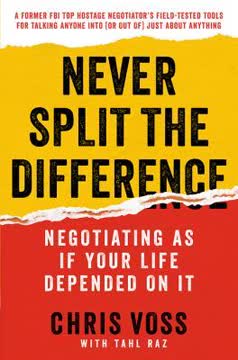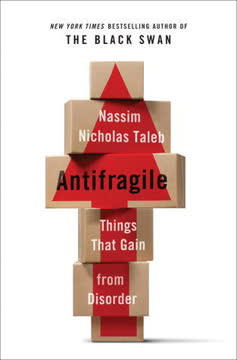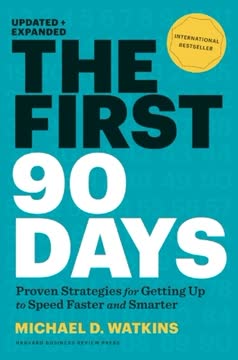가지 주요 요점
1. 변화는 끊임없다: 문제를 기회로 받아들여라
변화는 영원히 지속되며, 문제도 영원히 존재한다!
문제는 피할 수 없다. 변화만이 유일한 상수이며, 변화와 함께 기회와 문제도 찾아온다. 문제 없는 삶을 추구하는 것은 헛된 일이다. 조직은 문제를 삶의 자연스러운 일부로 받아들이고, 이를 효과적으로 다룰 수 있는 역량을 키우는 데 집중해야 한다.
성장의 촉매로서 문제. 문제 하나하나는 학습과 적응, 성장을 위한 기회다. 문제를 극복해야 할 도전으로 인식함으로써 조직은 혁신과 회복력의 문화를 조성할 수 있다. 점점 복잡해지는 문제를 해결하는 능력은 조직의 강점과 성숙도를 보여준다.
적응하지 못하면 도태된다. 변화의 속도는 점점 빨라지고 있으며, 조직은 생존을 위해 민첩하게 대응해야 한다. 올바른 결정을 신속히 내리고 효과적으로 실행하는 조직은 번영하지만, 변화를 거부하는 조직은 쇠퇴와 종말을 맞게 된다.
2. 조직의 생애주기: 성장과 쇠퇴의 예측 가능한 단계
이 책에서 나는 지난 30년간 개발하고 실천해온 조직 생애주기 이론과 조직 변화를 이끄는 원칙을 제시한다.
생애주기 단계. 조직은 살아있는 유기체처럼 구애기, 유아기, 급성장기, 청소년기, 전성기, 귀족기, 관료기, 그리고 궁극적으로 죽음에 이르는 예측 가능한 발달 단계를 거친다. 각 단계는 고유한 도전과 기회를 제공한다.
단계 이해하기. 조직이 현재 어느 생애주기에 있는지 파악하는 것은 정상적인 문제와 비정상적인 문제를 구분하고 적절한 개입을 실행하는 데 매우 중요하다. 이를 통해 리더는 도전을 예측하고 선제적으로 변화를 관리할 수 있다.
전형적 경로와 최적 경로. 조직은 각 단계에서 예측 가능한 문제를 겪는 전형적 경로를 따르거나, 전성기로의 진입을 가속화하고 그 상태를 더 오래 유지하는 최적 경로를 추구할 수 있다. 최적 경로는 보다 통합적이고 선제적인 경영 접근을 요구한다.
3. PAEI 모델: 네 가지 필수 경영 역할
개인, 가족, 조직, 사회 어느 수준에서든 리더십의 도전은 끊임없이 변화하면서도 항상 함께하는 것이다!
네 가지 핵심 역할. 조직이 단기와 장기 모두에서 효과적이고 효율적이려면 다음 네 가지 필수 경영 역할이 수행되어야 한다:
- P (생산자): 결과 달성과 약속 이행에 집중한다.
- A (관리자): 효율성, 질서, 통제에 중점을 둔다.
- E (기업가): 혁신, 창의성, 위험 감수를 주도한다.
- I (통합자): 결속력, 협력, 공동의 목적 의식을 조성한다.
완벽한 사람은 없다. 한 사람이 네 가지 역할을 모두 완벽히 수행할 수는 없다. 효과적인 리더십은 이 네 기능을 모두 갖춘 보완적인 팀을 필요로 한다.
역할의 동적 균형. 각 역할의 상대적 중요성은 조직의 생애주기에 따라 달라진다. 이러한 변화를 이해하는 것은 리더십 스타일과 전략을 변화하는 요구에 맞게 조정하는 데 필수적이다.
4. 전형적 경로: 순차적 성장 접근법
대부분의 조직은 전형적 경로를 따른다. 이 경로에서 조직은 아직 개발되지 않은 역량 때문에 문제에 직면한다.
순차적 발전. 전형적 경로에서는 조직이 PAEI 역할을 하나씩 개발하며 생애주기 단계를 예측 가능한 순서로 거친다. 이 순차적 접근은 각 단계에서 불균형과 예측 가능한 문제를 초래한다.
성장통. 한 단계에서 다음 단계로 넘어갈 때마다 특정 도전과 어려움이 따른다. 이러한 ‘성장통’은 조직이 새로운 요구에 적응하고 새로운 역량을 개발하려는 노력의 결과다.
예시: 급성장기. 급성장기에는 조직이 빠른 성장과 강한 영업 지향성을 보이나, 시스템과 통제가 부족해 과도한 확장, 재정 불안정, 집중력 상실이 발생할 수 있다.
5. 최적 경로: 통합적이고 가속화된 접근법
여기 제시된 최적 경로는 다른 문제를 야기하지만, 전형적 경로의 문제보다 낫다. 왜냐하면 조직을 더 빠르게 전성기로 이끌고 더 오래 유지할 수 있기 때문이다.
동시 발전. 최적 경로는 네 가지 PAEI 역할을 동시에 개발하여 보다 균형 잡히고 적응력 있는 조직을 만든다. 이 접근은 높은 수준의 통합과 선제적 변화 관리가 필요하다.
전성기로의 빠른 진입. 최적 경로를 따르면 조직은 전성기, 즉 최고 성과와 적응력, 지속 가능한 성공이 특징인 단계로 더 빠르게 나아갈 수 있다.
통합이 핵심이다. 최적 경로는 협력, 상호 신뢰, 공동 목적 문화를 조성하는 통합의 중요성을 강조한다. 이를 통해 조직은 네 가지 PAEI 역할의 강점을 최대한 활용하고 불균형의 함정을 피할 수 있다.
6. 조직의 노화: 쇠퇴 인식과 회복
조직은 정상적이거나 비정상적인 성장 문제를 겪을 수 있다. 노화 문제는 모두 비정상적이며, 적절한 처치로 예방할 수 있다.
노화는 불가피하지 않다. 조직의 노화는 자연스럽거나 피할 수 없는 과정이 아니다. 적절한 개입으로 쇠퇴를 늦추거나 되돌려 활력을 유지할 수 있다.
조기 발견이 중요하다. 노화의 초기 징후를 인식하는 것은 시기적절한 개입을 위해 필수적이다. 징후로는 혁신 감소, 집중력 상실, 내부 정치 강화 등이 있다.
치료적·예방적 처치. 치료적 처치는 비정상적 문제를 제거하고 조직을 건강한 상태로 회복시키는 것이다. 예방적 처치는 조직이 전성기로 나아가고 그 상태를 유지할 수 있는 역량을 개발하는 데 초점을 맞춘다.
7. 창업자 함정: 흔한 함정과 회피법
창업자는 동시에 회사의 가장 큰 자산이자 가장 큰 위험이다.
불가분성. 창업자 함정은 조직이 창업자에게 지나치게 의존해 성장과 적응이 저해될 때 발생한다. 이는 창업자의 개인적 스타일과 선호가 조직 문화에 깊이 뿌리내릴 때 흔하다.
위임의 어려움. 창업자 함정에 빠진 창업자는 권한 위임과 통제 포기에 어려움을 겪는다. 이는 혁신을 억제하고 필요한 경영 역량 개발을 방해한다.
리더십 제도화. 창업자 함정을 피하려면 조직은 소유와 경영을 분리하고, 특정 개인에 의존하지 않는 거버넌스 체계를 구축해야 한다.
8. 통합의 중요성: 결속력과 적응력 구축
개인, 가족, 조직, 사회 어느 수준에서든 리더십의 도전은 끊임없이 변화하면서도 항상 함께하는 것이다!
해체에 대응하기. 변화는 필연적으로 해체를 초래하며, 조직은 결속력을 유지하기 위해 시스템과 프로세스를 적극적으로 재통합해야 한다. 이를 위해 소통, 협력, 공동 목적에 집중해야 한다.
내부와 외부 통합. 내부 통합은 강한 조직 문화 구축과 상호 신뢰 및 존중을 촉진한다. 외부 통합은 조직을 외부 환경과 조화시키고 변화하는 시장 조건에 적응하는 것을 의미한다.
리더십의 역할. 효과적인 리더는 내부와 외부 통합 모두에 능숙하여 역동적인 환경에서 번영할 수 있는 결속력 있고 적응력 있는 조직을 만든다.
9. 리더십 스타일: 생애주기 단계에 맞추기
한 단계에서 정상인 것이 다른 단계에서는 비정상일 수 있다.
상황적 접근. 모든 조직에 맞는 단일 리더십 스타일은 없다. 가장 효과적인 접근법은 조직의 생애주기 단계와 구체적 필요에 따라 달라진다.
진화하는 리더십. 조직이 생애주기를 거치면서 리더십 요구도 변한다. 초기 단계에서 뛰어난 창업자가 후반 단계에 적합하지 않을 수 있어 전문 경영인으로의 전환이 필요하다.
보완적 팀. 효과적인 리더십은 네 가지 PAEI 역할을 모두 갖춘 보완적 팀을 포함하는 경우가 많다. 이를 통해 조직은 다양한 개인의 강점을 활용하고 단일 지배적 스타일의 함정을 피할 수 있다.
10. 조직 치료사의 역할: 변화와 재통합 안내
리더십의 역할은 시스템이 무너지지 않게 하는 것이 아니라, 오히려 시스템이 무너지는 변화를 이끌고 그것을 새로운 전체로 재통합하는 것이다.
변화 촉진. 조직 치료사 또는 컨설턴트는 조직이 변화와 재통합의 시기를 거치는 동안 중요한 역할을 한다. 그들은 조직의 현재 생애주기를 파악하고 문제를 진단하며 적절한 개입을 실행하도록 돕는다.
정상과 비정상 구분. 조직 치료사의 핵심 기능은 내부에서 해결 가능한 정상 문제와 외부 개입이 필요한 비정상 문제를 구분하는 것이다.
치료적·예방적 조치. 조직 치료사는 기존 문제를 해결하는 치료적 조치와 조직의 장기 건강과 성공을 증진하는 예방적 조치를 모두 제공한다.
마지막 업데이트 날짜:
FAQ
1. What is Managing Corporate Lifecycles by Ichak Kalderon Adizes about?
- Comprehensive lifecycle theory: The book explains how organizations, like living beings, go through predictable stages of birth, growth, maturity, aging, and sometimes death, each with characteristic problems and behaviors.
- Managerial roles and dynamics: Adizes introduces four key managerial roles—Performing (P), Administering (A), Entrepreneurial (E), and Integrating (I)—and shows how their development and balance affect organizational health.
- Organizational therapy approach: The book provides a prescriptive methodology for diagnosing organizational problems and applying targeted interventions to help companies reach and sustain the Prime stage.
- Practical focus: It is directed at leaders, consultants, and managers seeking to understand, predict, and manage organizational change effectively.
2. Why should I read Managing Corporate Lifecycles by Ichak Kalderon Adizes?
- Understanding organizational dynamics: The book helps readers recognize why organizations face recurring problems and how these relate to their lifecycle stage, enabling better diagnosis and management.
- Actionable management advice: It offers practical tools and frameworks for leading change, avoiding common traps like the founder’s trap, and sustaining organizational health.
- Unique methodology: Adizes’ symbergetic™ approach combines internal and external integration, providing a holistic and systemic way to manage organizational change.
- For leaders and consultants: The insights are especially valuable for those responsible for guiding organizations through growth, transition, or rejuvenation.
3. What are the key takeaways from Managing Corporate Lifecycles by Ichak Kalderon Adizes?
- Predictable organizational stages: Organizations evolve through distinct, predictable stages, each requiring different management approaches and facing unique challenges.
- Balance of managerial roles: Long-term success depends on developing and balancing the P, A, E, and I roles, rather than relying on one dominant style.
- Aging and decline: Loss of entrepreneurship (E) and breakdown of integration (I) are primary causes of organizational aging and decline.
- Leadership and culture adaptation: Leadership styles and organizational culture must evolve to match the needs of each lifecycle stage for sustained effectiveness.
4. What are the main stages of the organizational lifecycle in Managing Corporate Lifecycles by Ichak Kalderon Adizes?
- Courtship: The pre-birth stage focused on building commitment to an idea and testing its viability.
- Infancy: The organization is born, prioritizing survival, product development, and cash flow, with strong founder involvement.
- Go-Go and Adolescence: Characterized by rapid growth, entrepreneurial energy, and the need for systematization and delegation; internal conflicts often arise.
- Prime: The optimal stage where flexibility and control are balanced, and all four managerial roles are integrated.
- Aging stages (Fall, Aristocracy, Bureaucracy): Marked by loss of innovation, increased rigidity, internal politics, and eventual decline if not rejuvenated.
5. What are the four managerial roles (P, A, E, I) in the Adizes methodology, and why are they important?
- Performing (P): Focuses on short-term results and client satisfaction, essential for operational effectiveness, especially in early stages.
- Administering (A): Brings order, systematization, and efficiency, becoming critical as organizations grow and require structure.
- Entrepreneuring (E): Drives innovation, vision, and long-term growth, preventing stagnation and decline.
- Integrating (I): Fosters teamwork, shared values, and long-term cohesion, enabling sustainable success and adaptability.
6. How do the four managerial roles (P, A, E, I) interact and develop across the organizational lifecycle in Managing Corporate Lifecycles?
- Sequential development: The roles emerge in a specific sequence, as they are often mutually incompatible and can undermine each other if forced together prematurely.
- Role conflicts: For example, Entrepreneurship (E) seeks change and risk, while Administration (A) seeks order and control, leading to natural tensions.
- Integration as mediator: The Integrating (I) role is crucial for mediating conflicts and enabling the coexistence of other roles, especially in the Prime stage.
- Lifecycle alignment: Organizations must develop and synchronize these roles in the right order and timing to achieve and sustain health.
7. What is the significance of the Prime stage in Managing Corporate Lifecycles by Ichak Kalderon Adizes?
- Optimal organizational condition: Prime represents the ideal balance between flexibility and control, where the organization is both innovative and disciplined.
- Characteristics of Prime: Includes clear vision, institutionalized governance, controlled creativity, coalesced goals, and predictable excellence.
- Sustaining Prime: Staying in Prime requires continuous effort to nurture momentum, avoid complacency, and maintain the balance of all four managerial roles.
- Warning against decline: Without proactive rejuvenation, organizations risk slipping into aging stages marked by rigidity and loss of entrepreneurial spirit.
8. How does Managing Corporate Lifecycles by Ichak Kalderon Adizes define and differentiate normal, abnormal, and pathological problems in organizations?
- Normal problems: Expected, transitional issues that arise as organizations grow and develop new capabilities; they are necessary for learning and progress.
- Abnormal problems: Persistent, cyclical issues that block progress and require external intervention or organizational therapy to resolve.
- Pathological problems: Severe, chronic issues that threaten survival, such as uncontrollable cash flow crises or loss of key personnel, requiring drastic interventions.
- Management vs. therapy: Normal problems can be managed internally, while abnormal and pathological problems often need outside help.
9. What is the founder’s trap in Managing Corporate Lifecycles by Ichak Kalderon Adizes, and how does it affect organizational growth?
- Monopolization of control: Founders often centralize authority and decision-making, which is manageable in early stages but problematic as the organization grows.
- Resistance to delegation: The founder’s reluctance to share control prevents the development of necessary systems and leadership, causing bottlenecks.
- Stagnation and vulnerability: Organizations become dependent on the founder, struggle to institutionalize entrepreneurship, and may fail to attract investment or scale.
- Premature aging risk: The founder’s trap can lead to organizational stagnation or premature decline if not addressed.
10. How does Managing Corporate Lifecycles by Ichak Kalderon Adizes describe the causes and effects of organizational aging?
- Decline in entrepreneurship (E): Aging begins when the organization loses its entrepreneurial drive, becoming less flexible and proactive.
- Rise of administration (A): Increased emphasis on rules, control, and internal cohesion often comes at the expense of innovation and market responsiveness.
- Breakdown of CAPI: The disintegration of Coalesced Authority, Power, and Influence leads to paralysis, turf wars, and ineffective decision-making.
- Cultural shift: Organizations become inward-focused, risk-averse, and complacent, leading to loss of market share and eventual decline.
11. What is CAPI (Coalesced Authority, Power, and Influence) in Managing Corporate Lifecycles by Ichak Kalderon Adizes, and why is it important?
- Definition of CAPI: CAPI represents the combined sources of energy—authority (formal right to decide), power (ability to reward or punish), and influence (ability to persuade)—needed to implement decisions.
- Lifecycle dynamics: In early stages, CAPI is centralized in founders; in Prime, it is institutionalized; in aging stages, it fragments, causing organizational paralysis.
- Impact on effectiveness: Strong, coalesced CAPI enables decisive action and adaptability, while its breakdown leads to inefficiency and conflict.
- Key to governance: Proper management of CAPI is essential for sustaining organizational health and effective leadership transitions.
12. What practical advice does Managing Corporate Lifecycles by Ichak Kalderon Adizes offer for sustaining organizational health and managing change?
- Lead change proactively: Organizations must continuously initiate change that causes temporary disintegration, followed by reintegration into a healthier whole.
- Institutionalize governance: Establish clear decision-making processes and constitutions to depersonalize authority and maintain cohesion.
- Balance creativity and control: Nurture innovation while aligning power structures and processes to ensure controlled, profitable growth.
- Prepare for transitions: Manage delegation and leadership changes carefully to avoid founder traps and ensure smooth organizational maturation.
리뷰
독자들은 『기업 생애주기 관리』를 통찰력 있고 필수적인 경영 지도서로 높이 평가한다. 많은 이들이 조직의 성장과 변화를 이해하는 데 있어 이 책이 제공하는 포괄적인 틀을 반드시 읽어야 할 필독서로 꼽는다. 특히 실무에 바로 적용할 수 있는 내용과 다양한 사례 연구가 큰 호응을 얻고 있다. 일부 독자들은 글의 일부가 다소 지루하거나 복잡하다고 느끼기도 하지만, 대다수는 저자의 체계적인 접근법과 독특한 시각에 깊은 공감을 표한다. 이 책은 기업의 도전 과제를 헤쳐 나가고 지속 가능한 성장을 도모하고자 하는 관리자, 컨설턴트, 그리고 창업자들에게 특히 권장된다.
Similar Books














